If I hadn’t fired up my vision to form and live in an intentional community some 45 years ago I wouldn’t have learnt cheese making, selected and planted an orchard of rare species of fruit trees, co-organized arts festivals, learnt and practiced conflict resolution and given my three sons an opportunity to broaden their horizons. This all came about in the wake of the hippie 60s when I took the plunge and as a single parent set off with my three young children to explore the southwest USA and Mexico. I didn’t have to justify school absence in those days! I still reckon this adventure added something special to their lives. On that journey we visited many communities particularly in California.

The enthralling artwork of Damanhur community in Italy. Much of it created underground.
Approaching communities
So what is an intentional community? How does one go about exploring this way of living? The idea has spread all across the planet. There are established communities in many countries, but that doesn’t mean there’s no room for establishing a new one. The tribal spirit sits just under the surface in a surprising number of people whenever I speak on the subject. To be realistic – to promote this way of living without recognizing the challenges involved would be foolish. Some communities have a high turnover and that’s one factor to note if you visit.
A way to approach community is first to look at their website, because most don’t encourage people to just drop in. But for many people, making their first visit to an existing intentional community is a challenge simply because they are unsure what to expect. Of course you can expect challenges, but the rewards are great too. Life is about taking risks.

Looking back to 1974, the risks we took, the embarrassing public inquiry for planning permission where we were asked how we were to live in this grade 2 listed Franciscan Friary. But it was worth it!
Many communities have special events during the course of the year. This can give you a flavour and help find the answer to the question: “is this for me?” Another way to visit rural communities is to join WWOOF (volunteers on organic farms) – practical help is always valued in a land-based community. This way you will get experience of organic smallholding as well as a flavor of community life without feeling you are the odd one out.
Ecovillages and the Global Ecovillage Network
Ecovillages are urban or rural communities of people, who strive to integrate a supportive social environment with a low-impact way of life. To achieve this, they integrate various aspects of ecological design, permaculture, ecological building, green production, renewabel energy, community building practices, and much more. An ecovillage is intended to be a socially, economically and ecologically sustainable intentional community. Most aim for a population of 50-150 individuals because this size is considered to be the maximum social network that an individual can cope with.

La Caravana Huehuecoyotl community Mrxico, Alberto Ruiz co – founder of community and peace pipe carrier drove this hand painted bus throughout south America using performing art to teach local people about the dangers from pollution.
Listings of Ecovillages are accessed and identified mostly through the internet and within environmental networks. Individually they tend to encompass variations on a sustainable eco-spiritual vision. How people build and live is a measurably important part in assessing the group’s carbon footprint. For example the Findhorn Foundation in Scotland has been a low-carbon pioneering Ecovillage since 1985. In addition, in Europe there is now a network of 10 communities: Sieben Linden, Damanhur, Tamera, Valle de Sensaciones, Matavenero, Schloss Glarisegg, Schloss Tonndorf, Krishna Valley, La Borie Noble, Finca Tierra.
Search for “community” on Google and examples are as wide and varied as there are fish in the sea. But by definition, community simply means a body of people who hold a common interest. It may be religious or secular.

Connecting with the spirit of Nature in the sanctuary at Findhorn.
Beginnings of the modern movement
The aim of this introduction is to focus on a particular social movement, which some would describe as alternative but I prefer to describe as cutting edge for social change. Since the mid 1950s, a reaction to the way society was heading in the US and Europe has been swelling, brought about by groups of people with a desire to share common interests – environmental, economic, social and political. People have reconnected with the awareness of their strength in group action. (2+2 = at least 5, energetically speaking). The more adventurous formed intentional communities, sharing their lives for mutual benefit.
The essential elements of community became a touchstone, sparking many initiatives; some of these communities are thriving 50 years on as a beneficial way of living. I remember in those early post WW2 days, the work of B.F. Skinner (behavioral scientist) sparked a genus of social experimenters, which led to the formation of communities like Twin Oaks (1967) in the States. The community idea then evolved through communes in the hippy era of the 60s, transiting to eco-spiritual communities and ecovillages of the 80s. Community for now has become an expression of ‘Thinking globally and acting locally’.

Zegg community in Germany demonstrating the practice of win win win in group decision making.
Another event that influenced my views on the importance of community was a meeting with visionary architect Paolo Soleri at the Arcosanti Community, which he designed for sustainable, creative and harmonious living in the desert near Phoenix, Arizona. On one occasion I asked him how he felt the community direction was developing in relation to his vision. He replied, ‘I make the violin, they play the tune’. Thirty-four years later, his visionary tune is as strong as ever.
Starting intentional communities
Returning to UK, the dream quickly became a reality for me on seeing a Franciscan Friary for sale. After lengthy discussion with Chris Mattingly (pioneer of Postlip Hall and Cannon Frome communities) I set about creating Old Hall, a land-based organic farming community in Suffolk. 30 years of experience in this community brought much joy, many challenging experiences but enabled me to ‘walk my talk’ with honesty and integrity which inevitably leads to sometimes challenging situations.

The wood store at Old Hall was a demanding devouring focus of energy. Eating communal was the norm but peoples private space required heating too.
I could never have developed to be who I am at 84 if I had lived in an ordinary family home. Living together as a group makes for economic purchasing power. But the social power of the group creates a different kind of tribal power. Combining all the abilities participants have to offer as well as an opportunity to be oneself and not have to project a false image make this kind of life enticing. I continue to encourage and experiment with sowing seeds to germinate the spirit of community, and realising its value in these turbulent times.
My nine positive key factors for living in community are
- Equality
- Eco-sustainability
- Adopting the concept of win-win
- Honouring traditions
- The art of peace
- Fulfillment through leisure
- Tribal / community building
- Love – unconditionally
- Evolution through realization

Old Hall 1979 saw the Fire Festival at Old Hall, one of four annual events. Bruce and Jill were always creating spectacular ceremonies. Festivals attracted upwards of 9000 people.
 Michael Baker is a grandfather committed to social and eco-spiritual change. He co-founded Old Hall Community, Suffolk, U.K. in 1973 and is a Findhorn Foundation (Scotland) Resource Person. He travelled extensively visiting communities in SW USA and journeyed with indigenous leaders of Central America. He featured in the film Land Awakening by Raul Alvarez. Grandfather Michael is currently developing an internet community, Being Nature.
Michael Baker is a grandfather committed to social and eco-spiritual change. He co-founded Old Hall Community, Suffolk, U.K. in 1973 and is a Findhorn Foundation (Scotland) Resource Person. He travelled extensively visiting communities in SW USA and journeyed with indigenous leaders of Central America. He featured in the film Land Awakening by Raul Alvarez. Grandfather Michael is currently developing an internet community, Being Nature.

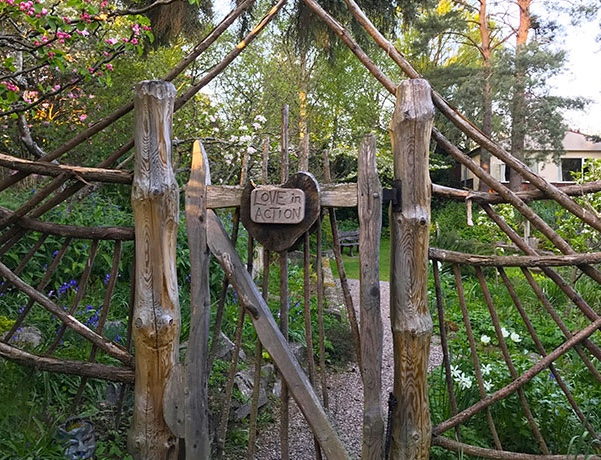
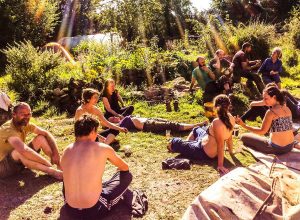


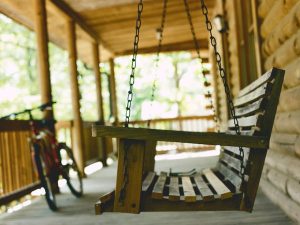

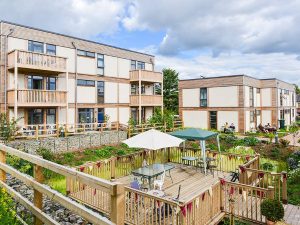
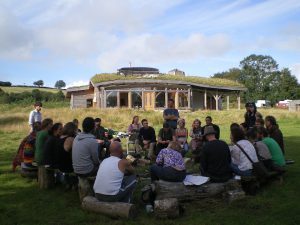
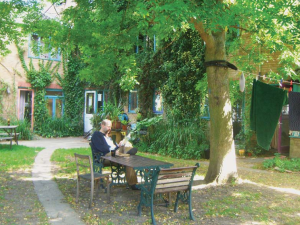

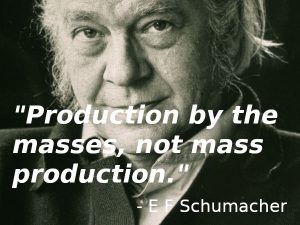
21 Comments
Michael, I loved reading about your pioneering work and your ideas, especially your 9 positive key factors.
There is so much fear out there about joining an intentional community and somehow losing one’s identity – even becoming somehow ‘institutionalised’. I watched my own parents’ poor decision making around their later life based on living in a ‘nice house’ in a ‘nice village’ – now marooned in a hamlet and unable to drive, with very few surviving friends nearby, I witness my mother (father died 2 years ago) physically and mentally closing in on herself.
I have come to the conclusion that in order to age with grace and good health it is vital to keep opening up to the challenges of life. We face so much in today’s world that can harm and disempower us as citizens – but we can find a different way by finding ourselves. Looking deeply within and looking for likeminded people (our tribe).
What can be fearful about intentionally wanting to live in proximinty to folk who share our own values? What is there to fear in challenging ourselves to learn new skills ? When we are in community we have so much more talent to pool and learn from. We can explore ways that are different from the status quo. We can look out for and support each other. We can find ways of communicating which are respectful and encouraging. As you say – in your list – adopting the positive concept of win-win.
After almost 10 years of thinking about what changes to make in my life in order to feel connected and fulfilled I sold my house and moved to a strange town in order to join a cohousing group who are planning their own intentional neighbourhood. My tribe is here, my work is here , my values are here, my vision for a better life is here – no fear about the future , just a deep connection to community and the affirmation that as a group we are far more powerful, in all sorts of ways, that we would ever be on our own.
Thankyou Lin, it was a challenge when the East Bergholt community started. I had come within 100 votes of winning a county council seat from a retired army officer who had held what was thought to be a Tory stronghold. There was a local public enquiry to discuss our planning permission
‘Who’s in charge?” … Answer “We all are”. This was immediately seen as a threat. But we got our planning permission by being calm and facing them with honesty that we wished to grow together as a community.
We shared our skills and what we didn’t know we learnt. But in spite of some hardship, celebrating success and establishing traditions through the arts as well as eating together gradually became the force to build the spirit of community.
This is broadly true of Findhorn Eco spiritual community as well
Of course consensus decision making played a part as well.
Lin – I’m part of a group of 3 couples (including one child) who are looking to start a cohousing project. It will probably be in Sussex, and we envisage that it will eventually consist of around 10-12 people. I agree entirely with what you said about getting old. There seems to be a fear of ‘togetherness’ – as if it takes away independence. But it doesn’t – it just provides support and, well, fun.
I’d love to chat with you about your project. We blogged recently about Sunflower cohousing (https://www.lowimpact.org/sunflower-cohousing-community-looking-for-members/) – a group of English people who have set up in France, because of the cost of land and the hostile planning system in the UK. We really want to be in the UK though, because of social networks and ageing parents.
Hi dave
There is lots of information on our website http://www.bridportcohousing.org.uk – we are trying to be as open and transparent with our process as possible so that hopefully cohousers who are starting up from scratch won’t take as long !! The machine of beaurocracy seems to grind relentlessly and we have to work through a system which is in place to benefit mainstream developers. This group has been in its process for 9 years so far, Last month we celebrated buying our land !!
New members bring new energy and we are looking for more – especially with young children as we are now working towards getting the build started . Cohousing is such a wonderful mix of privacy and community. We are also learning to use Sociocracy, as our decision making process, rather than consensus – this could start up a whole new conversation !! Happy to chat with you anytime.
Dave, interesting how family and support tie in. Its been a good learning curve for me to spend up to 6 months on a mountainside in Andaluicia. Im over in England but about to go back. I accept I may die there and that concerns my sons in UK. And I miss them all when over there. Somehow a community has evolved out there but in an unintentional way. … around de schooled kids for example. The richness of it lies in the contrasting slower pace of life. Even though my Spanish is not that good, everybody has time to hug, care and speak.
Decision making structures in community are vital for community success. Size of membership is very relevant too. I’ve heard it often said that an ideal membership is 18 to 24 people for good communication.
Findhorn’s community is very complex but some 450 people are in the network.
Findhorn uses sociocratic decision making. I’ve been involved in Dragon Dreaming at Findhorn.
Its beneficial if anyone contemplating joining a community to gen up on these methods of group bonding to achieve win win.
Understanding the role of a facilitator, and an observer in group work is important too.
Sometimes when there is major controversy in a group its good to leave an issue to settle before coming to a conclusion in the best interests of the group.
It’s odd that they challenged your intentions at Old Hall, as the previous occupants, the friars, would also have been living in an intentional community – they could accept the one with a traditional hierarchy but not understand one with a different approach to organising themselves. Do you think people today are more accepting of your preferred way of life, or do you think that in general people still view communities with suspicion/scepticism? My impression of the world is that nobody seems to trust anyone these days, hence the 6ft fencing around most dwellings. I can’t see that a natural sense of community, that used to be found in neighbourhoods and villages 80 to 100 years ago, that my father and grandparents spoke of, will ever return.
HI Theresa
That observation that you made about people putting up fences between neighbours comes from fear, and the skewed story that we are telling ourselves about who we really are as human beings , mainly because of the fear based media stream that is focussed on what is negative rather than what is positive because it gets more attention. We all have so much more access to what is going on in the world today than we ever used to and there is so much wonderful stuff happening right now that we never get to hear about unless we take it upon ourselves to search for it.
Humans are social beings – you only have to look at what happens in a crisis to see that most of us will react to what is going on in an altruistic way.
We all have the power to change our mindset away from negative to positive every moment of every day.
There is a movement that has been happening for many decades in countries like Denmark and America called ‘cohousing’ which sets out to design a neighbourhood. It’s core vision is usually centred around a mix of private dwelling space and community resource sharing. Homes are designed specifically to encourage casual social interaction, usually there are car free streets ( car are parked around the boundaries) and there would be a ”common house” – a social space for all to use. All residents sign up to doing a small amount of work in order that things can run without it costing huge amounts of money to pay for things – whether this is administrative work, gardening or cleaning common areas – everyone mucks in and does what they can.
There is an appetite for this type of housing development and more schemes are coming on board all the time. These communities may have a focus like sustainable living or creating affordable housing – this attracts a certain type of person to become part of the scheme and suddenly you can find yourself living in a street with all your neighbours sharing your own values, people looking out for each other and doing what they can to make it better for the whole community ……………………sounds pretty much like the kind of neighbourhoods our parents and grandparents used to live in, doesn’t it ??
.
Hello Lin and Theresa,
This is a valuable discussion.Regarding comments about fences and the beginning of Old Hall I was already living in the village and had 1 year previously begun a Parent Teacher Association and was chairing it at the primary school at which my boys were attending. So there was public support for me from the head teacher. I had also met the Father Guardian of the Franciscan responsible for the Friary and explained what I hoped to achieve. He spoke at the public enquiry we had to go through for change of use planning permission. He supported us because he could see our honourable intentions were similar without a Christian label.
So i did my spadework before the fences went up. As a group of some 15 adults and a similar number of children we had quite an impact on village resources. Honesty and openness definitely paid off but inevitably some would always be suspicious because we could be seen as a threat to their values. This all happened at the time of the “Reds under the bed ” scare in early 70’s and this was a politically very blue area.
The children blended very well after getting over the initial excitement of this barn of a building where unexploded ammunitions were discovered because of ww2 use by military.
Yes, commitment to a certain amount of labour to benefit the group is a key to good will and positivity among the group. Potential disaster as well if people opt out, so calm discussions are important. This is where a good facilitation of meetings come into its best.
I think the problems about fences and mistrust depend on a number of factors and they are different depending on cultural factors as well as the more obvious ones. I say this because of experiences in Mexico and Spain. Theres a lot to be said for the passion and openness of groups in those countries. I write from the experience of Huehuecotll community in Mexico and starting up a Transition Town community group in Andalucia, Spain.
Very interesting about the fences. We lived in a street in South London where we had street parties, chatted all the time, invited each other round for dinner, went to the pub together, and generally supported each other. We then moved about a mile away, and none of those things happen any more, although we’ve tried. We invited the old neighbours round and talked about why that might be. The only thing physically different is the fences – 4ft tall in the old street, 6ft tall in the new one.
Two feet make all the difference…. two feet are made for walking round the fence! Sorry my sense of humour gets the better of me!
Incredible Edible Todmorden brought the fences down, how can this initiative spread ? Is this for Transition Towns network to push forward as an example?
Lin, it does sound like an ideal place to live. I will have to look into the subject of cohousing more.
Michael, I live in Sudbury, not so far from East Bergholt. My parents moved to this area in ’72 and I vaguely remember hearing about your community starting up. Sadly, blue is still the dominant colour in this part of the world, in spite of all the local hardship.
Regarding sustainability, environmental care and awareness, etc, I can understand why movements like Transition and Incredible Edible don’t seem to take root easily. Some appear exclusive, and also there are so many to choose from that it’s bewildering. Plus shopping ethically/sustainably can appear to be expensive, when you have a mortgage to pay and children to bring up or are on a low income. It’s difficult to wriggle free from the financial trap most people are in. I’ve always believed that doing your bit, no matter how small or insignificant it seems, is definitely the way forward. But most people don’t think their efforts count and as Lin said earlier, they are bombarded by the media every single day with negative news, that it seems pointless changing.
Community community community – where have you gone? I find it hard to find people who share my values and ideas for a better ?.
I too found the ‘fence’ comments interesting… its made me wonder why my neighbours dont like speaking to me- i have tried and tried,
Not even a ‘good morning! Our old neighbours were lovely, happy to feed the cat, share things , come in for a chat and a cuppa and that
Was only 10 years ago. Our present situation seems to come from a place of fear and judgement… Perhaps the internet and the pursuit of busy/material wealth has left so many people unable to engage.
Thank goodness for websites like this ?? hope , curiosity and empathy are whats needed.
Sasha and other friends, may i suggest do a little digging…. theres “Diggers and Dreamers ” for the UK. There are Directories of Inter national Communities, There is a network of Transition Towns, There is W.W.O.O.F., There is Helpex Network.
All of these give detail that might inspire you to make contact with positive like minded people Depending whether you want to visit or join with like minded people or just have a holiday with a difference.
From experience of community , internal fences emerge in different ways. In the formative stages for example, two fences emerge. Ons very strong fence appears around a communal kitchen. The other around sharing of children’s toys when different age groups are involved But i can say with confidence, fences come down when effort is put in to bring them down.
Of course there are some personalities that simply don’t hit it off.
Has the spirit of intentional community outdated itself? Has a new form of tribalism formed up? Are we in Britain very insulated from initiatives in other parts of the world? What are the motives for collective living in the 2018’s?
Grandfather Michael – I was interested to watch the link you gave to the film about living at Old Hall – the residents all seeming to get something that suited them from being in that Community – one woman in particular particularly questioned whether what they were doing was ”sustainable” in the real sense of the word, and indeed it did rather paint a picture of an idyllic life in the country . One of the underlying principles that our cohousing group has at its heart is that of being ”sustainable” but this is a much abused term these days and I fear that we will achieve something which is far from that goal.
However, we have that intention, and I am sure people will do what they can to live in a mindful and considered way, with utmost respect for their neighbours within the community and also the world outside.
Who knows what peoples’ motives are for living in community today? – Fear of being alone ? as we age in a world that is rapidly changing into a different technological reality coupled with the onset of climate catastrophe and resource scarcity ?
At least if we have found our tribe and can be comfortable in our skin and able to fully express ourselves within our chosen community we can live a good and meaningful life.
Lin, I sense a rural setting plays an important part… closer to nature’s cycle of time… in so many ways that gets acted out whether at Old Hall or Findhorn. Urban living is so artificial to our true nature.. it’s un nature all.
Its the common denominators that pull people together albeit land, political will or living economically.
Interesting to note the origins of the word economy are from classical Greek times… meaning to manage the household. Perhaps 7billion of us should see the planet as our house.
Hi all…i really miss living in an intentional community..At present i live in a sort of community where we live on houseboats managed by a corporate marina. some of the things that are happening arent pleasent. The people are great 7 everybody met up at unfortauntly a parish council meeting as my neighbours arent getting their yearly contract renewed after putting in plans to referb their dutch barge..basically being booted off end of march! not nice but apparently plans to make all 30 moorings hol rentals…typical..I plan to sell n year or maybe sooner depending wether my mother moves into a carehome before the end of the year. I lived on Erraid a findhorn foundation in 2008 but got really horizontal by 9 months with Lyme and had to move back down to london again. I loved it apart from some problems with couple people…Ive also lived at Damanhur for 3months on the new life program, volunteered and stayed at Stewardwood who lost their appeal & lammas who are now an Eco village. Im intreasted in starting a community, it might be I move south or Central Americas …buying land in UK is unafordable but France spain Portugal dont really ring my bell…..I love these posts by the way…thank you for your posts comments etc…..all valuable they inspire me. sat kartar
I grew up in a commune and as a result I feel comfortable and at home in a large house, with shared facilities/responsibilities and group socialising. I’ve spent most of my life living independently but now at sixty I feel anxious about the lonely chapter of semi retiement ahead.
Intentional communities are a great option.. I intend to look around the UK for somewhere I feel a connection to.
Maybe I have some advantages in that my childhood memories give me a natural sense of this being a much healthier place and an easier one to express myself in…
(some people I know feel completely the opposite).
I think it also comes down to identifying myself as a deeply social animal.. Once you understand humans that way it’s hard to relate to the structure of housing and living we’ve seen evolve all over the planet without being aware of a massive void in the social potential.
Of course I cannot forget the deeply private and intimate relationship I need to maintain with myself! And this is something that can get eclipsed in busy communal living. There is a common and perhaps inevitable need to escape from communal living and be completely alone or in an environment where one has no obligations. I think that much can be done to alleviate this by paying attention to internal work through yoga, meditation and also personal creative projects, and being assured that you have the time within the structure of the community to do this work and that you do it! . it can be very easily lowered in the priority list. I think there is much pain and suffering in my life, which Buddhism recognises.. for me there is a need to listen to those thoughts that make mortality fearsome, regretful or angry etc.. and to address them with the hope of living fully in the moment and coming to the end of life with love and resilience.